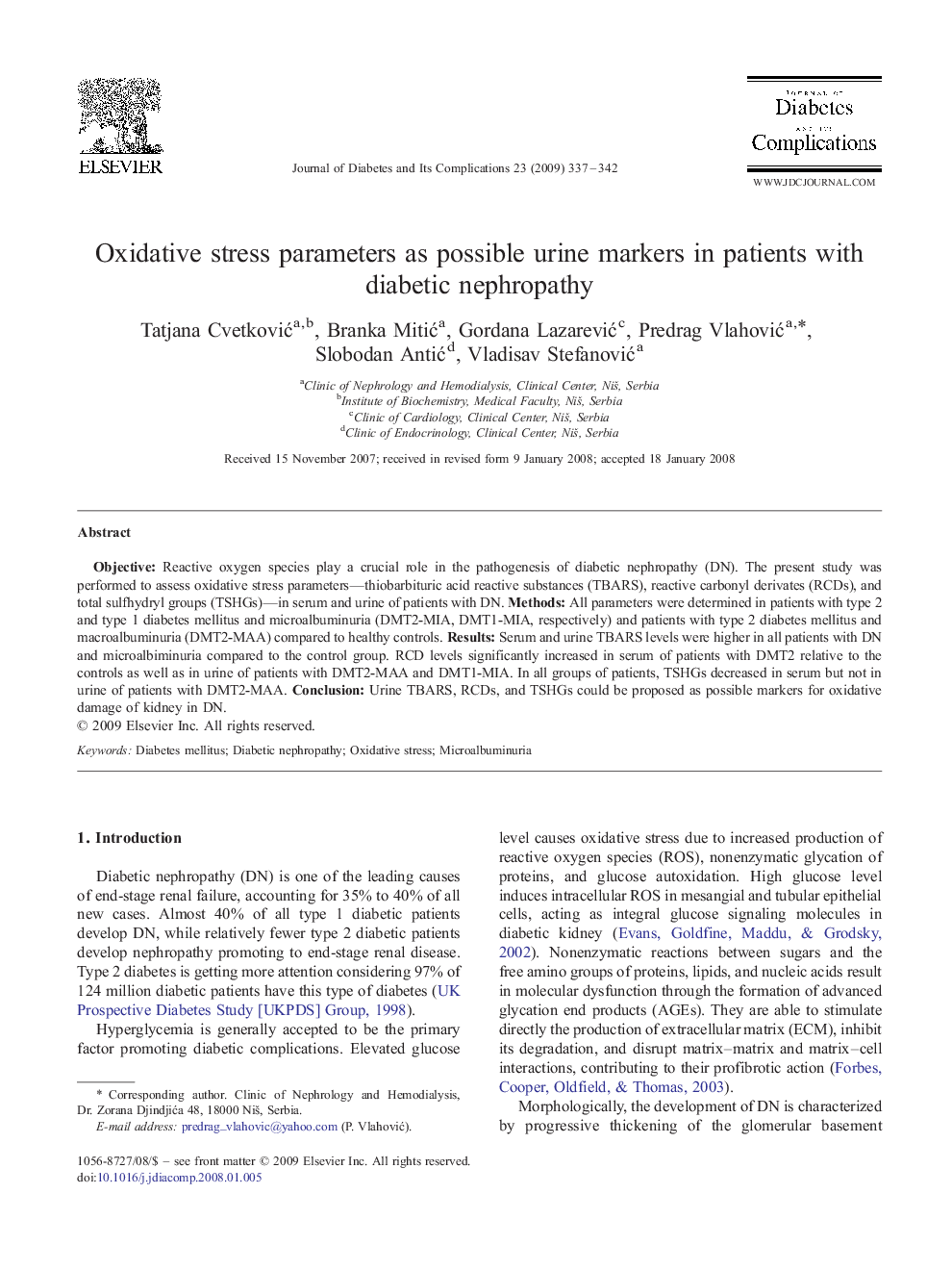| Article ID | Journal | Published Year | Pages | File Type |
|---|---|---|---|---|
| 2804561 | Journal of Diabetes and its Complications | 2009 | 6 Pages |
ObjectiveReactive oxygen species play a crucial role in the pathogenesis of diabetic nephropathy (DN). The present study was performed to assess oxidative stress parameters—thiobarbituric acid reactive substances (TBARS), reactive carbonyl derivates (RCDs), and total sulfhydryl groups (TSHGs)—in serum and urine of patients with DN.MethodsAll parameters were determined in patients with type 2 and type 1 diabetes mellitus and microalbuminuria (DMT2-MIA, DMT1-MIA, respectively) and patients with type 2 diabetes mellitus and macroalbuminuria (DMT2-MAA) compared to healthy controls.ResultsSerum and urine TBARS levels were higher in all patients with DN and microalbiminuria compared to the control group. RCD levels significantly increased in serum of patients with DMT2 relative to the controls as well as in urine of patients with DMT2-MAA and DMT1-MIA. In all groups of patients, TSHGs decreased in serum but not in urine of patients with DMT2-MAA.ConclusionUrine TBARS, RCDs, and TSHGs could be proposed as possible markers for oxidative damage of kidney in DN.
